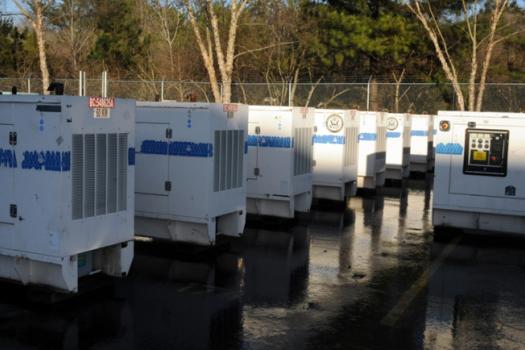Through FEMA's flood hazard mapping program, Risk Mapping, Assessment and Planning (MAP), FEMA identifies flood hazards, assesses flood risks and partners with states and communities to provide accurate flood hazard and risk data to guide them to mitigation actions. Flood hazard mapping is an important part of the National Flood Insurance Program (NFIP), as it is the basis of the NFIP regulations and flood insurance requirements. FEMA maintains and updates data through Flood Insurance Rate Maps (FIRMs) and risk assessments. FIRMs include statistical information such as data for river flow, storm tides, hydrologic/hydraulic analyses and rainfall and topographic surveys.
FEMA uses the best available technical data to create the flood hazard maps that outline your community’s flood risk areas. A variety of audiences ranging from homeowners to engineers and mapping professionals can benefit in learning more about flood hazard mapping in the sections below:
To keep up with the latest developments in flood hazard mapping, please visit What's New in Flood Hazard Mapping. You can also sign up for e-mail updates using the link below.
![]() Flood Hazard Mapping News e-mail updates
Flood Hazard Mapping News e-mail updates
Risk Mapping, Assessment and Planning (Risk MAP)
FEMA is working with federal, state, tribal and local partners across the nation to identify flood risk and help reduce that risk through the Risk MAP program. Risk MAP provides high quality flood maps and information, tools to better assess the risk from flooding and planning and outreach support to communities to help them take action to reduce flood risk. To learn more about the goals and vision for Risk MAP, how the program works and what it means for you, visit the Risk MAP home page
How to View and Obtain Flood Maps
The FEMA Flood Map Service Center (MSC) is the official online location to find all flood hazard mapping products created under the National Flood Insurance Program (NFIP), including your community’s flood map, called a Flood Insurance Rate Map (FIRM).
Effective FIRMs and any amendments or revisions that apply to them may be accessed through the site’s Address Search, in addition to the full range of products accessible through the Search All Products function. All MSC products and services are available at no cost.
Your local Community Map Repository, usually located in the planning and zoning office, also has copies of flood maps. Please contact a FEMA Map Information eXchange Map Specialist to determine the location of your Community Map Repository.
Change My Flood Zone Designation
If a property owner thinks their property has been inadvertently mapped in a Special Flood Hazard Area (SFHA), they may submit a request to FEMA for a Letter of Map Change (LOMC). An SFHA is defined as the area that will be inundated by the flood event having a 1-percent chance of being equaled or exceeded in any given year. A LOMC reflects an official revision/amendment to an effective FIRM. If the LOMC request is granted, property owners may be eligible for lower flood insurance premiums or the option to not purchase flood insurance.
Applicants can use the Online LOMC tool to easily request a Letter of Map Amendment (LOMA) online. A LOMA is a letter from FEMA stating that an existing structure or parcel of land—which is on naturally high ground and has not been elevated by fill—would not be inundated by the 1-percent annual chance flood. The Online LOMC tool is available to any applicant who would like to submit a LOMA request directly to FEMA and does not require a surveyor or engineer to submit. Users can submit LOMA requests through this tool instead of filing the MT-EZ paper form via mail. Learn more through the Online LOMC homepage.
Licensed land surveyors and professional engineers (Licensed Professionals) also can use the eLOMA, another web-based application, to submit simple LOMA requests to FEMA. This tool is designed to make a determination based on the information submitted by the licensed professional and allow them to generate a determination from FEMA in minutes. The eLOMA enables licensed professionals to make requests for existing single residential structures or properties, provided no fill has been placed to raise the elevations of the structure or property. For more information on the eLOMA, visit the eLOMA website or read the eLOMA fact sheet.
Special Types of Flood Risk - Coastal and Levee Impacted Areas
Living near a levee or in a coastal community brings with it unique risks. Visit the Living with Levees and Coastal Flood Risk pages to learn more about how these special risks are studied by FEMA and to better understand how to reduce flood risk in these areas.
Cooperating Technical Partners (CTP)
The CTP Program is an innovative approach to creating partnerships between FEMA and participating NFIP communities, regional agencies and state agencies that have the interest and capability to become more active participants in the FEMA Flood Hazard Mapping program.
Get Assistance
Answers to the most Frequently Asked Questions are provided for the following user groups: homeowners, engineers, surveyors and architects, insurance professionals and lenders and floodplain managers.
For more information about flood hazard mapping, map change requests and other information provide on this page, contact a Map Specialist in the FEMA Map Information eXchange (FMIX) through the following methods:
- Call (1-877) FEMA MAP (1-877-336-2627) Monday through Friday, 8:00 am through 6:30 pm (EST)
- Email FEMAMapSpecialist@riskmapcds.com
- Chat with a Map Specialist Monday through Friday, 9:00 am to 5:00 pm (EST)
Related Links
- Flood Hazard Mapping Resources
- Change my Flood Zone Designation
- Mapping Contacts
- Fee Schedule
- NFIP-Programmatic Environmental Impact Statement



